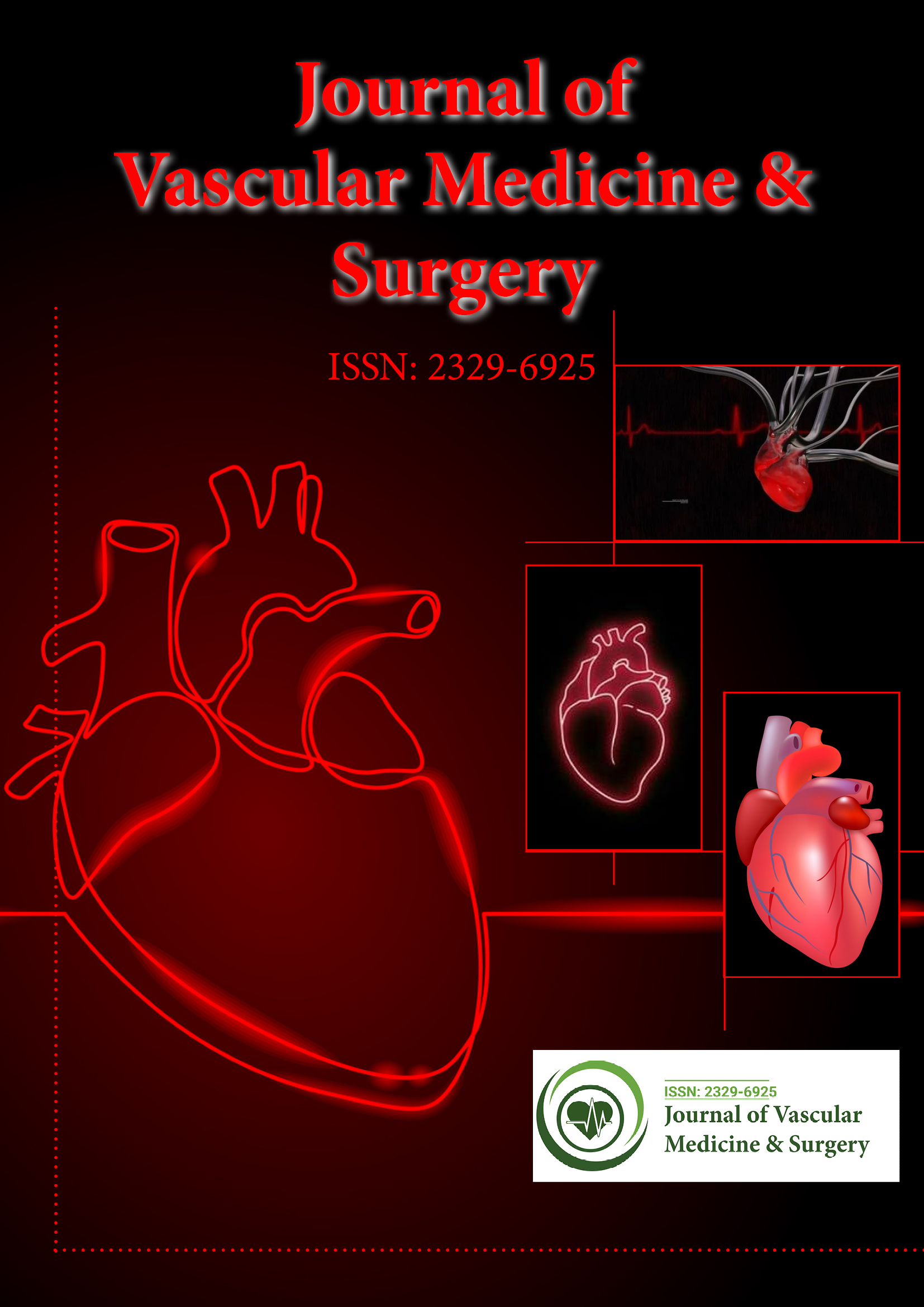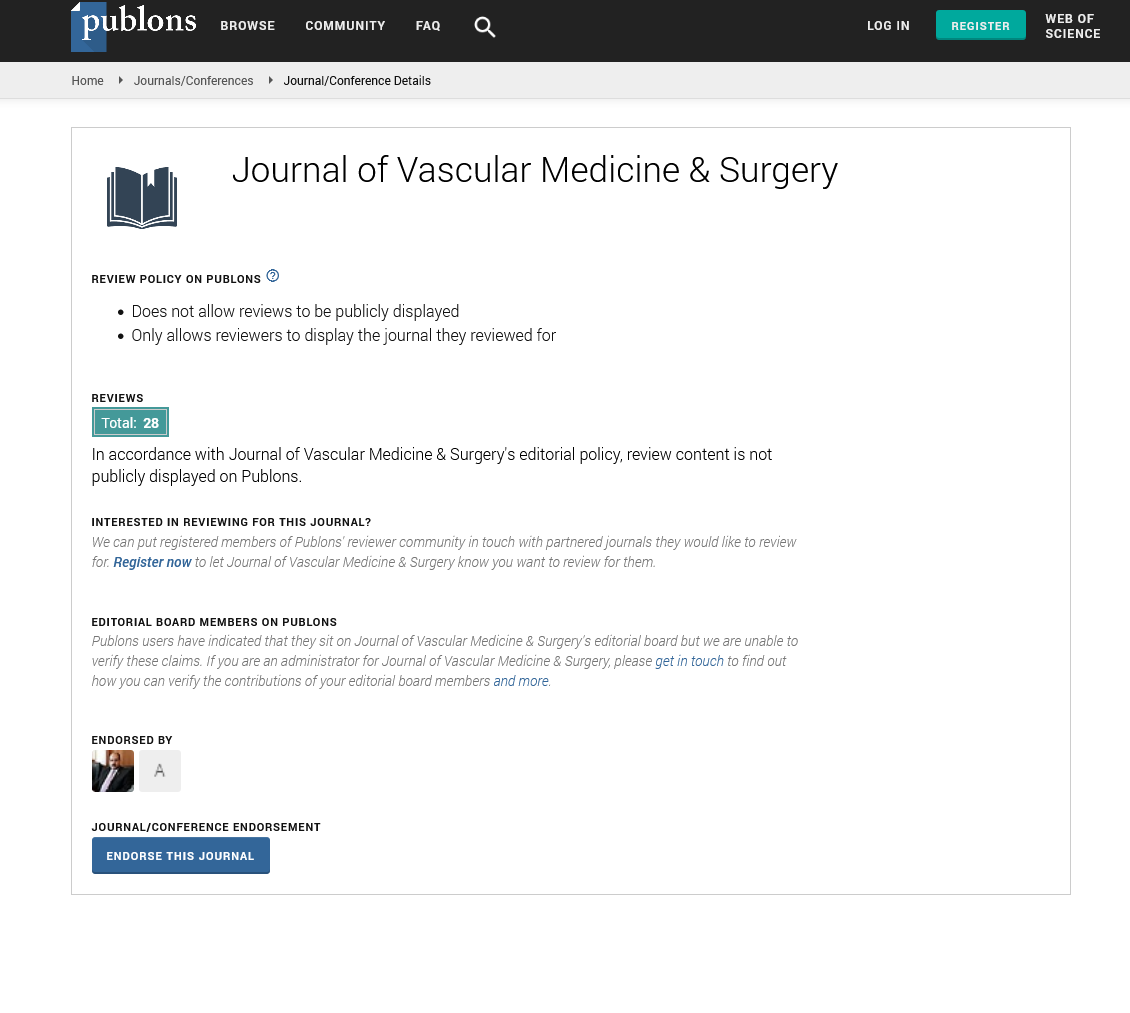Indexed In
- Open J Gate
- Academic Keys
- RefSeek
- Hamdard University
- EBSCO A-Z
- OCLC- WorldCat
- Publons
- Euro Pub
- Google Scholar
- SHERPA ROMEO
Useful Links
Share This Page
Journal Flyer

Open Access Journals
- Agri and Aquaculture
- Biochemistry
- Bioinformatics & Systems Biology
- Business & Management
- Chemistry
- Clinical Sciences
- Engineering
- Food & Nutrition
- General Science
- Genetics & Molecular Biology
- Immunology & Microbiology
- Medical Sciences
- Neuroscience & Psychology
- Nursing & Health Care
- Pharmaceutical Sciences
Editorial - (2021) Volume 9, Issue 4
Editorial on Atherosclerosis Cause and Complications
Botcha Venkata Sai Sravani*Received: 05-Jul-2021 Published: 26-Jul-2021, DOI: 10.35248/2329-6925.21.9.e419
Editorial Note
Atherosclerosis is an infection where plaque develops inside the arteries. Plaque is comprised of fat, cholesterol, calcium, and different substances found in the blood. After some time, plaque solidifies and narrows your arteries. This restricts the progression of oxygen-rich blood to your organs and different pieces of the body. Atherosclerosis can prompt difficult issues, including coronary failure, stroke, or even death.
Atherosclerosis is thickening or setting of the passages achieved by an improvement of plaque in the internal covering of a stockpile course. Peril components may consolidate raised cholesterol and greasy substance levels, hypertension, smoking, diabetes, beefiness, dynamic work, and eating doused fats.
Causes
Atherosclerosis is a sluggish, reformist illness that may start as ahead of schedule as adolescence. Albeit the specific reason is obscure, atherosclerosis may begin with harm or injury to the internal layer of a conduit. The harm might be brought about by:
• Hypertension
• Elevated cholesterol
• High fatty substances, a sort of fat (lipid) in your blood
• Smoking and different wellsprings of tobacco
• Insulin opposition, weight or diabetes
• Irritation from an obscure reason or from infections like joint pain, lupus, psoriasis or incendiary entrails sickness
When the inward mass of a course is harmed, platelets and different substances regularly cluster at the injury site and develop in the internal coating of the vein. After some time, greasy stores (plaque) made of cholesterol and other cell items additionally develop at the injury site and solidify, narrowing your veins. The organs and tissues associated with the impeded conduits then, at that point don't get sufficient blood to work appropriately.
Ultimately, bits of the greasy stores may sever and enter your circulatory system. What's more, the smooth coating of the plaque may crack, spilling cholesterol and different substances into your circulation system. This may cause a blood coagulation, which can impede the blood stream to a particular part of the body, for example, happens when obstructed blood stream to your heart causes a coronary failure. Blood coagulation can likewise venture out to different part of the body, hindering stream to another organ.
Risk factors
Solidifying of the arteries happens over the long haul. Other than maturing, factors that may build the danger of atherosclerosis include:
• Hypertension
• Elevated cholesterol
• Undeniable degrees of C-receptive protein (CRP), a marker of aggravation
• Diabetes
• Heftiness
• Rest apnea
• Smoking and other tobacco use
• A family background of early coronary illness
• Absence of activity
• An undesirable eating routine
Complications
The inconveniences of atherosclerosis rely upon which courses are obstructed. For instance:
Coronary supply route illness
At the point when atherosclerosis limits the veins near your heart, you may foster coronary conduit sickness, which can cause chest torment (angina), a cardiovascular failure or cardiovascular breakdown.
Carotid conduit infection
At the point when atherosclerosis limits the courses near your cerebrum, you may foster carotid conduit infection, which can cause a Transient Ischemic Assault (TIA) or stroke.
Fringe supply route illness at the point when atherosclerosis limits the supply routes in your arms or legs, you may foster flow issues in your arms and legs called fringe corridor sickness. This can make you less touchy to warmth and cool, expanding your danger of consumes or frostbite. In uncommon cases, helpless course in your arms or legs can cause tissue passing (gangrene).
Aneurysms
Atherosclerosis can likewise cause aneurysms, a genuine complexity that can happen anywhere in your body. An aneurysm is a lump in the mass of your vein.
Atherosclerosis can cause the arteries leading to your kidneys to narrow, preventing oxygenated blood from reaching them. Over time, this can affect your kidney function, keeping waste from exiting your body.
Citation: Sravani BVS (2021) Editorial on Atherosclerosis Cause and Complications. J Vasc Med Surg. 9:e419.
Copyright: © 2021 Sravani BVS. This is an open-access article distributed under the terms of the Creative Commons Attribution License, which permits unrestricted use, distribution, and reproduction in any medium, provided the original author and source are credited.

